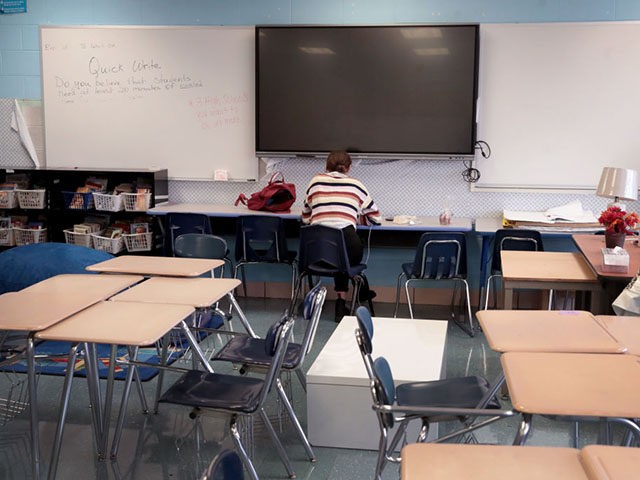An estimated 240,000 students across 21 different states did not return to school following the coronavirus, a study from Stanford and the Associated Press found.
While private school and homeschooling enrollment surged during this same timeframe, these 240,000 students did not resume their studies elsewhere, but instead are unaccounted for.
Some school leaders have warned that “when you lose kids, you lose resources,” which in turn “impacts your ability to serve kids with very high needs.”
Over the course of the first two years since the coronavirus outbreak, K-12 enrollment in public schools fell by an astounding 1.2 million students.
Meanwhile, the study also found that the popularity of both private schooling and homeschooling increased. While private school enrollment was four percent higher in the 2021-2022 school year than it was in the previous year, homeschooling enrollment shot up a full 30 percent in the same time frame. Private school growth was particularly pronounced for kindergarten and early elementary students.
Homeschool enrollment growth varied wildly by state, with North Carolina only showing an eight percent increase, the lowest of any state. Meanwhile in Florida, homeschooling enrollment jumped by 43 percent. The growth was even higher in other states, with homeschool enrollment surging by 53 percent in Pennsylvania and an astounding 65 percent in New York.
But critically, a key finding from the study notes that “More than a third of the loss in public school enrollment cannot be explained by corresponding gains in private school and homeschool enrollment and by demographic change.”
While both a decrease in the school age population and an increase in private and homeschooling certainly affected the numbers, the report explains, “The large amount of public school enrollment loss that, in many states, cannot be explained by changes in nonpublic enrollment and demographics suggests the possibility of other developmentally relevant behaviors.”
Students who remain in the education system, particularly those who were in critical portions of their education journey when coronavirus hit, often face setbacks. Students who were just learning how to read, for example, are in a precarious situation. One report from the Associated Press about an Atlanta, Georgia, school notes,“Five of the 19 students in teacher Chelsea Grant’s third grade classroom are reading below grade level.”
Spencer Lindquist is a reporter for Breitbart News. Follow him on Twitter @SpencerLndqst and reach out at slindquist@breitbart.com.

COMMENTS
Please let us know if you're having issues with commenting.